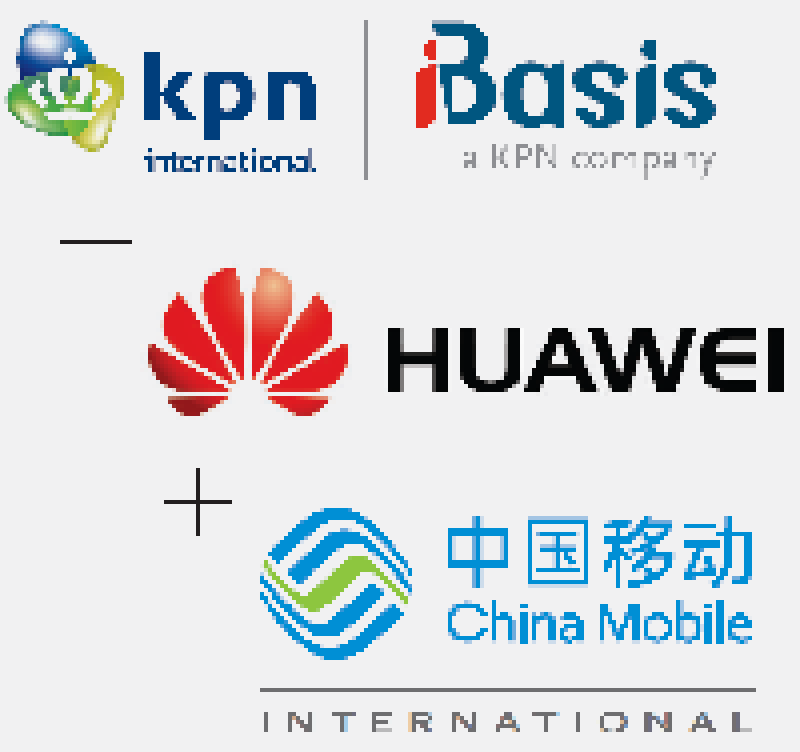
VoLTE-to-VoLTE
Who: Verizon and AT&T
What: VoLTE-to-VoLTE
Where: United States
Why: A global first for the industry, US conglomerates AT&T and Verizon announced that they were enabling VoLTE-to-VoLTE connections between their respective customers in November last year.
Numerous VoLTE trials are being completed worldwide, but the interoperability of the technology between diffrrent networks remains a problem. Now that two of the industry’s largest players are actively trying to address this, the US could firmly be placed at the forefront of LTE innovation.
“Interoperability among all VoLTE providers takes connectivity to the next level with HD quality voice and additional features that customers want,” says Tony Melone, CTO at Verizon.
“We’re pleased to be working with AT&T as our first inter-operating carrier, and we look forward to working with other operators as VoLTE continues to grow.”
VoLTE looks set to transform the voice market, and engineers at both AT&T and Verizon are working through a strict set of requirements, starting with extensive lab-testing and moving on to field trials. Not only will this ensure the seamless customer experience, but also lay the foundation for the future interoperability of other rich communications services (RCS).
Krish Prabhu, president at AT&T Labs and CTO at AT&T, believes VoLTE interoperability between mobile carriers is crucial to a positive customer experience.
“Customers expect to be able to connect anywhere, anytime – and as LTE technology continues to evolve, it is imperative that we provide a seamless experience between carriers,” Prabhu says.
“We continue to work with others in the industry on similar collaborative arrangements and hope to see similar collaboration across the industry in the near future.”
Full VoLTE interoperability between Verizon and AT&T customers is expected by mid-2015, and the two firms have been working closely with the GSMA on the initiative.
Alex Sinclair, CTO at the GSMA, highly endorses the interconnection of services and expects the deal between AT&T and Verizon to extend the reach of rich and reliable all-IP communications to a customers’ contacts on another network.
“Embracing an all-IP future is vital for operators worldwide and the GSMA is delighted that AT&T and Verizon Wireless are bringing these services to their customers.”

Who: Huawei and China Mobile
What: 'Cloudified' VoLTE
Where: China
Why: In March this year, Chinese vendor Huawei successfully demonstrated its virtualised VoLTE solution designed specifically to support China Mobile’s ‘Cloudified’ VoLTE service.
An extension of an existing partnership, the demonstration showed a clear commitment from both firms for the vision of network functions virtualisation (NFV) as the next-generation of core network architecture.
As cloud technology development sky-rockets, carriers are moving away from traditional service architecture which is no longer able to provide a satisfactory user experience, to an integrated ICT cloud architecture. Many in the industry are now of the belief that NFV is the answerto a better quality experience, as it alters the closed circle on the traditional network, shortens the service innovation period, reduces operational and maintenance cost and establishes a more open industry chain.
“Cloud technology is well adopted in the IT domain. It can bring advantages to the communications service provider (CSP) such as service agility, shorter time-to-market, capex savings on commercial o -the-shelf (COTS) hardware and improved operational e ffiency,” says Wang Yongde, VP of core network product line, carrier business group at Huawei Technologies.
Huawei ran rich interoperability tests in the China Mobile R&D centre prior to the trial, and the on-site trial for Cloudified VoLTE is due to be set up this year.
The Huawei Cloudified VoLTE solution runs on the vendor’s COTS hardware servers and cloud operating system, and during the MWC demonstration, Huawei implemented a number of NFV-based core elements.
These included its virtualised IP multimedia subsystem (vIMS), virtualised evolved packet core (vEPC), virtualised subscriber data management (vSDM) as well as a virtualised policy and charging rules function (vPCRF).
Customers were able to personalise their own Cloudi ed VoLTE solutions via HD audio and video services, and Huawei stressed the importance of NFV for an open network that is flexible, reliable, cost-efficient and easy to operate and maintain.
“This is the first time China Mobile announces the Cloudifid VoLTE service in public, through MWC,” Yongde says.
“This signifis commitment from both Huawei and China Mobile to push forward the application of cloud technology in the communications domain.”

Who: Cisco
What: Universal Wifi solution for HD voice and data
Where: Worldwide
Why: Coming in ahead of the game, US giant Cisco launched its Universal Wi fi solution for service providers in November 2014. It was the industry’s first end-to-end solution featuring HD voice experience (HDVX) technology, and is designed to enable millions of Wi fi devices to operate as phones.
Cisco’s solution is designed to enable service providers worldwide to offer high-quality calling services to their customers, as a complement to their existing cellular voice services.
Created with seamless experience in mind, the Cisco Universal Wifi solution is intended to deliver secure on-boarding, ubiquitous coverage, scalability and media services such as high-definition voice over Wifi (VoWifi).
Given its speed, cost and coverage, Wifi has become the preferred mobile data experience, and Cisco predicts that by 2018, Wifi and mobile-connected devices will generate 76% of all traffic, up from 59% in 2013.
“Voice over Wifi marks a new era for service providers, and Cisco is excited to work with our customers to capture this transformational shift,” says Suraj Shetty, VP and general manager of mobility solutions at Cisco’s service provider mobility business group.
“With high-definition voice experience (HDVX), Wifi becomes a truly integrated feature in the network. It is only with a universal approach to Wifi and to the network, that service providers can offer a superior-quality voice over Wifi experience to their customers.”
And such is their confidence in VoWifi, that Cisco produced a report earlier this year forecasting that VoWifi traffic will exceed voice over LTE traffic by 2017.
The study is the first to fully analyse VoWifi, and Cisco based its findings on a mix of independent analyst forecasts and real-world mobile data usage studies.
Cisco claims that its solution provides the highest available throughput over a wide area, and a key component of the offering is the Cisco Aeronet 1570. This element is allegedly the most powerful and longest-range outdoor access point on the market, facilitating service providers with pervasive carrier-grade outdoor coverage at an affordable price.
Spanish cable operator and MVNO Telecable has widely deployed the Cisco Aeronet 1552 and Jesus Perez, chief technology officer at the company says it is eager to introduce the 1570.
“[The Cisco Aeronet 1570] has many of the next-generation features on our roadmap, including high-performance 802.11ac and a 24x8 cable modem,” Perez adds.
Cisco celebrated its 30th anniversary at the end of last year by launching an ambitious initiative targeting the Big Data and analytics market. The company revealed eight different software solutions, targeting various industries and designed to analyse data from across all areas of the network.
The improvisation of Wifi networks was of significant importance for the vendor. Its Connected Analytics tool is designed to help service providers proactively plan for capacity based on customer usage, improving business operations and uncovering potential new revenue opportunities such as how to tailor pricing plans based on this data.

Who: KPN, China Mobile and Huawei
What: IMS VoLTE roaming call
Where: Europe and Asia
Why: In another global first for the China Mobile/Huawei comradeship, the pair teamed up with Dutch operator KPN in October 2014 to facilitate the world’s first international VoLTE roaming call using IMS (IP multimedia subsystem) architecture.
A further step in the globalisation of VoLTE, the trio have proven the versatility of the technology with their latest trial and the mobile operators are now preparing for the commercial roll-out of VoLTE roaming to their subscribers in China and the Netherlands respectively.
VoLTE represents a significant gain in network efficiency and end-user convenience; for example it allows customers to make VoLTE calls on an LTE network while simultaneously downloading content.
The call was initiated by KPN Netherlands and connected by China Mobile using KPN subsidiary iBasis as a tandem office. Huawei provided key network components and Long Jiping, VP at Huawei Core Network, reiterated the vendor’s commitment to the global deployment of commercial VoLTE.
“We feel honoured to co-operate with KPN and China Mobile to complete this call,” Jiping says. “As 4G evolves, Huawei will continue to work with both operators to stimulate a smooth network evolution from 3G. This will bring higher quality service experience to their users.”
The trial successfully demonstrated high-fidelity voice and video capabilities, providing the foundation for long-distance communications, and verifying the commercial deployment of international VoLTE roaming. Like many, KPN has noted the challenge operators face when expanding beyond traditional services in order to o er international VoLTE calling.
In a statement, KPN said that the solution from iBasis supports both local breakout and home routing and helps operators overcome challenges such as “global reach for VoLTE calls, signalling and media interworking between VoLTE and non-VoLTE networks, supporting VoLTE global roaming and exploiting HD voice capabilities”.
KPN adds that the trial proves the potential that both China Mobile and KPN customers could enjoy the full VoLTE experience while travelling abroad once the service has been made commercially available to its customers.

Who: Ruckus Wireless
What: Smart Wifi for IP VoWifi
Where: United States
Why: Global Wifi specialist Ruckus Wireless revealed a collection of Smart Wifi technology innovations in February this year, in a move designed to answer the growing demand for high quality, IP-based voice over Wifi (VoWifi) services in even the most challenging of environments.
The Californian tech firm is planning to implement the new technology as standard across its portfolio of Smart Wifi products, some of which have already been tried and tested by two of the US’ biggest players - rumoured to be Sprint and T-Mobile.
“The innovations we’ve made will improve the reliability and quality of Wifi Calling applications, which enables both service providers and enterprises to extract greater value from their Wifi infrastructure,” explains Dan Rabinovitsj, chief operating officer at Ruckus Wireless.
“While voice over Wifi isn’t new, the ability to deliver a carrier-class voice service over Wifi is something that no one has mastered, until now.”
The innovations from Ruckus focus extensively on service quality and the new innovations are designed to support real-time, bidirectional voice calls that demand a narrow set of operating parameters from the network.
The innovations include such capabilities as capacity-based client access control, Wifi multimedia admission controls and directed roaming, and are expected to help customers ensure optimal performance of VoWifi communications.
Capacity-based client access control is designed to monitor and manage the number of devices connecting to a Wifi access point (AP) during peak periods, as too many users can be detrimental to service quality.
Wifi multimedia (WMM) admission control improves the performance of Ruckus networks for real-time voice and video services by preventing oversubscription of bandwidth. Clients are consequently required to request a specific amount of bandwidth before connecting to a Wifi AP.
Directed roaming helps to ensure the overall quality of user experience on the wireless LAN (WLAN) network by directing users towards different Wifi access points that can provide a better user experience. Should signal fall below user-definable signal strength, the APs automate a list of alternative access points and request the client moves to one of these.
US-based MVNO Republic Wireless turned to Ruckus Wireless when it encountered performance issues with its corporate Wifi network which in turn impacted testing environments for the operator.
“As a pioneer in ‘Wifi First’ smartphone technology, Republic requires the highest performance from our corporate wireless network,” says Republic Wireless’s chief executive and co-founder, David Morken.
“With Ruckus, we’ve got the Wifi environment our engineers require in order to continue delivering new services and features for our customers.”




